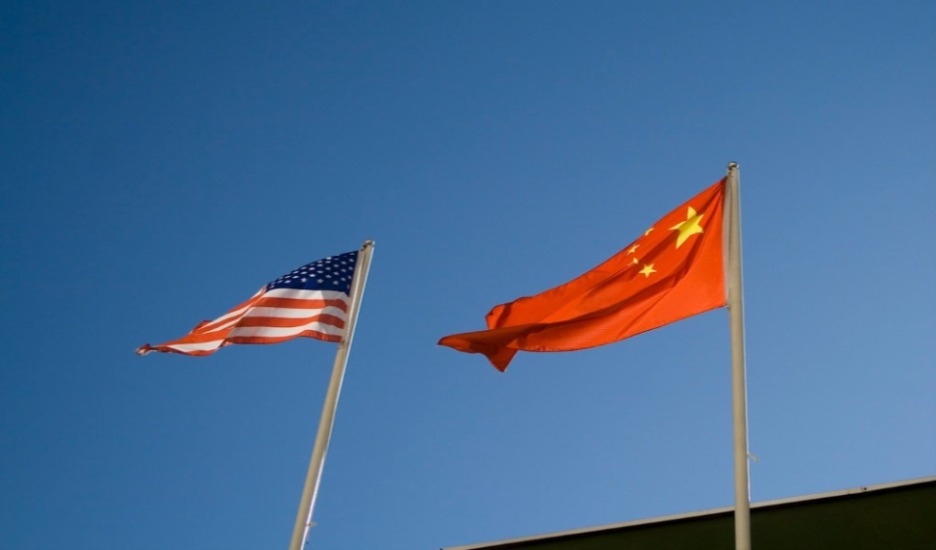The New, and Low, Normal in U.S.-Pakistan Relations

Published by The Lawfare Institute
in Cooperation With

Editor’s Note: Pakistan, once at the center of U.S. foreign policy, is increasingly marginalized. The Brookings Institution’s Madiha Afzal describes how and why both Biden and Trump see little value in close relations with Pakistan and argues that a limited, transactional relationship is the new normal.
Daniel Byman
***
The four years of the Biden presidency have been a relative low point for U.S.-Pakistan relations, driven not by any real break in relations, but by a seeming lack of interest from the White House. Biden leaves office as the only U.S. president never to have called his Pakistani counterpart, although he did send Pakistan’s prime minister a short letter after the country’s fraught 2024 election. More than anything, this low-level equilibrium for bilateral relations reflects Pakistan’s reduced importance to the United States after the end of the war in Afghanistan. That will continue into the next administration.
The war in Afghanistan had formed the basis of the U.S.-Pakistan relationship since 2001, just as the previous war did in the 1980s. While Pakistan’s support for the Taliban ultimately led to growing distrust, especially during the Obama years, the U.S. presence in Afghanistan nevertheless necessitated a dependence on Pakistan, especially on its military, for counterterrorism needs and, later, for negotiations with the Taliban. That largely ended with the U.S. withdrawal in August 2021.
As vice president-elect in 2009, Biden told Afghanistan’s president Hamid Karzai, “Mr. President, Pakistan is fifty times more important than Afghanistan for the United States.” But Biden seemed eager to put both countries in the rearview mirror, and the disastrous withdrawal from Afghanistan seems to have amplified this desire.
The bilateral relationship under Biden evolved into a two-track equilibrium, with no engagement from the White House and systematic, albeit limited, diplomatic and military engagement at the agency level. In a positive step, a new U.S. ambassador to Pakistan was appointed in May 2022 after the post was vacant for a couple years. The State Department put together a set of initiatives—a green alliance, a health dialogue, assistance after the country’s catastrophic 2022 floods—that were important but did not form the basis for a comprehensive or wide-ranging relationship. The military-to-military relationship has continued, now focused partly on over-the-horizon counterterrorism in Afghanistan, as illustrated by the frequent engagement of senior U.S. military leaders with their Pakistani counterparts. For instance, the CENTCOM commander visited Pakistan five times in the past four years.
The bilateral relationship was further complicated during the Biden years by Pakistan’s own political turmoil and former Prime Minister Imran Khan blaming the United States for his ouster in April 2022. (In reality, he was ousted because he had fallen out with the military.) The country’s democracy is increasingly troubled. That has gone mostly without comment from the Biden administration, other than relatively muted expressions of concern around the country’s marred election in February 2024. The Biden administration has pointed to Pakistan’s legal system and the election commission as institutions that can resolve electoral concerns and has left it at that. Meanwhile, members of Congress have taken a much stronger stance in support of Pakistan’s democracy and have written repeated letters to the White House urging it to take notice, to little avail.
In December, the Biden administration imposed new sanctions on four entities supplying Pakistan’s ballistic missile program; notably, one of them is a state agency, and three are private companies. Using significant new language, a senior White House official stated that the long range of these missiles gives Pakistan the ability to strike beyond South Asia and, as such, can be seen as an “emerging threat” to the United States.
Trump’s Pakistan Policy, Then and Now
The first Trump administration’s approach to Pakistan was acrimonious from the start, and after one year in office, Trump blasted Pakistan in a tweet in January 2018 for “lies and deceit”—by which he meant taking U.S. aid and doing little in return. The administration then cut off $1.3 billion in U.S. security assistance to Pakistan. But by the fall of 2018, the Trump administration seemed to have calculated that an exit from Afghanistan would not come via a military victory and that it needed Pakistan’s help with an Afghan peace process. Trump wrote then-Prime Minister Khan a letter in late 2018 asking for help with the process, sowing the seeds for a reset. For the second half of the Trump administration, the relationship evolved to be relatively high profile but transactional. Pakistan produced Mullah Abdul Ghani Baradar, the deputy leader of the Taliban who had been in Pakistani custody, and Baradar became the Taliban’s chief negotiator. Trump’s special envoy, Zalmay Khalilzad, visited Pakistan at least 15 times over two years. The U.S.-Taliban deal that was signed in Doha in February 2020 and served as the basis for the U.S. withdrawal from Afghanistan in 2021 was negotiated with Pakistan’s help. Trump met with Khan multiple times and the two celebrity-turned-populist politicians appeared to hit it off.
Khan is now in jail, a result of his escalating confrontation with the Pakistani military since his ouster in 2022. Some of Khan’s supporters in Pakistan (and among the diaspora in the United States) had expressed hopes that Trump as president might exert pressure on the Pakistani state to release Khan from prison, and it is to that end that some Pakistani American groups who support Khan endorsed Trump during the presidential campaign. But the task that underpinned the transactional relationship with Pakistan in Trump’s first term—the impending U.S. withdrawal from Afghanistan—is long over. Trump did not mention Pakistan nor Khan during the campaign, and he has not mentioned the country since his election even as he has made his foreign policy priorities clear; the country does not seem to be on his radar, and his key advisers are focused on China, Russia-Ukraine, and other issues. The wild card in this equation is Richard Grenell, Trump’s pick for the new position of “presidential envoy for special missions,” who has publicly advocated for Khan’s release. But the extent of Grenell’s influence in Trump’s orbit is uncertain and at this point seems marginal. Trump’s unconventional approach to foreign policy also introduces some uncertainty into the mix, but unless something significant shifts, Trump will be unlikely to turn his attention toward Pakistan or its new leaders as president, nor is he likely to raise any questions about Pakistan’s democracy or human rights situation, as Khan’s supporters hope.
While military-to-military engagement between the two countries will continue in the upcoming Trump administration, it’s unclear whether the various initiatives that began under the Biden State Department will continue. Expectations should be low, given the way the Trump State Department conducted policy during his first term and the new administration’s plans to gut the federal bureaucracy.
The New Normal
This diplomatic aloofness with an undercurrent of military coordination may well be the new normal in U.S.-Pakistan relations. Pakistan enjoyed a disproportionate level of interest and attention in the United States when America was involved in Afghanistan and was designated a major non-NATO ally in 2004. But Pakistan no longer has a clear narrative for why it should be of disproportionate interest to the United States, and its geographical location and population size alone do not suffice. It has significantly hurt Pakistan’s case that the U.S. war in Afghanistan ended with the country in Taliban hands. In addition, Pakistan’s internal political struggles and its economic crises and challenges do not make it an attractive partner. It is hard to make a case for a robust economic relationship between Pakistan and the United States, as its government has wanted for years, given that the country is on its 25th loan from the International Monetary Fund and trapped in a series of debt crises that generate cycles of macroeconomic instability. In Pakistan, some observers worry that increasing U.S. hawkishness on China and closeness with India will continue to adversely affect ties, but Pakistan’s intrinsic challenges are the primary reason the relationship will remain weak.
What does command U.S. attention and worry is Pakistan’s nuclear arsenal. Fears that Pakistan’s nuclear assets might fall into the wrong hands is the key lens through which the country is looked at in Washington. This focus dictates Washington continuing to keep close the Pakistani military, which the U.S. government trusts to guard those assets.
An ideal U.S. approach to Pakistan would, among other things, bolster Pakistani democracy by making its civilian government the United States’s primary partner, setting up a virtuous cycle. Instead, because the military is viewed in Washington as Pakistan’s most competent and powerful institution, it has become the U.S. partner both of choice and of necessity. That, in turn, tilts the balance of power in civil-military relations even further toward the military in Pakistan because the military derives legitimacy in part from its strong relationship with the United States, and the cycle continues.
The reality is that the United States has limited tools—short of drastic ones, such as broad economic sanctions, which pragmatically it sees no reason to use against Pakistan at this point—to influence the trajectory of Pakistan’s democracy. Nor does it have incentives to try to promote democratic reform and civilian rule. The United States, regardless of administration, needs to work with the Pakistani military in the short term on counterterrorism concerns in the region—and U.S. and Pakistani counterterrorism concerns are arguably more aligned now than during the two decades when the United States was present in Afghanistan and the Taliban had sanctuary in Pakistan. The United States also does not want to risk major political instability in a nuclear-armed state.
The reality, then, is that the low-level equilibrium of U.S.-Pakistan relations that has characterized the past few years is here to stay. For anything to change, Pakistan will have to exhibit political stability and significant economic growth. Both, and especially the latter, appear elusive.


.jpg?sfvrsn=5a43131e_9)


